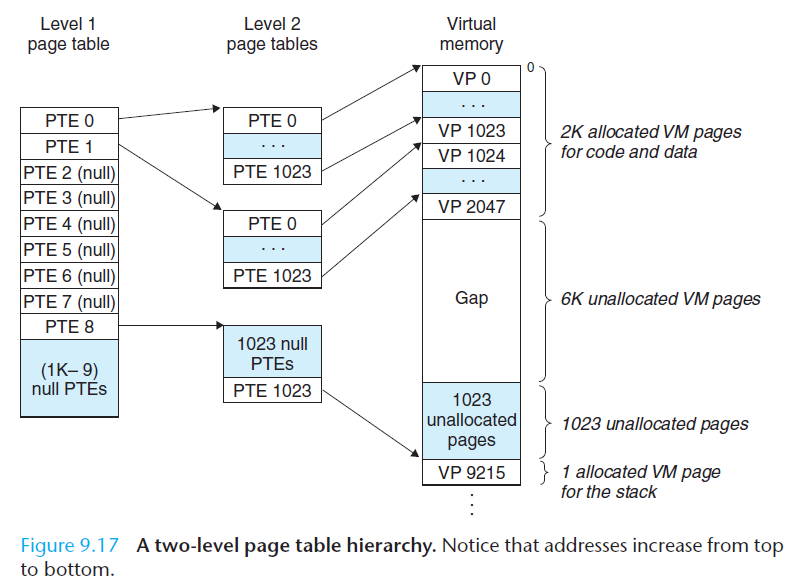Each process has its own virtual address space, so the virtual address 0xdead0000 in one process's address space will represent a different physical page than the page represented by 0xdead0000 in another process. Each process has it's own mapping from virtual addresses to physical addresses, virtual addresses are often reused between processes.
| Basic Paramaters | |
| Symbol | Description |
| N = 2n | Number of addresses in virtual address space |
| M = 2m | Number of addresses in physical address space |
| P = 2p | Page size (bytes) |
| Components of a virtual address (VA) | |
| Symbol | Description |
| VPO | Virtual page offset (bytes) |
| VPN | Virtual page number |
| TLBI | TLB index |
| TLBT | TLB tag |
| Components of a physical address (PA) | |
| Symbol | Description |
| PPO | Physical page offset(bytes) |
| PPN | Physical page number |
| CO | Byte offset within cache block |
| CI | Cache index |
| CT | Cache tag |


As we have seen, every time the CPU generates a virtual address, the MMU must refer to a PTE in order to translate the virtual address into a physical address. In the worst case, this requires an additional fetch from memory, at a cost of tens to hundreds of cycles. If the PTE happens to be cached in L1, then the cost goes down to one or two cycles. However, many systems try to eliminate even this cost by including a small cache of PTEs in the MMU called a translation lookaside buffer (TLB).
A TLB is a small, virtually addressed cache where each line holds a block consisting of a single PTE. A TLB usually has a high degree of associativity. As shown below, the index and tag fields that are used for set selection and line matching are extracted from the virtual page number in the virtual address. If the TLB has T = 2t sets, then the TLB index (TLBI) consists of the t least significant bits of the VPN, and the TLB tag (TLBT) consists of the remaining bits in the VPN.

Two-level paging scheme
